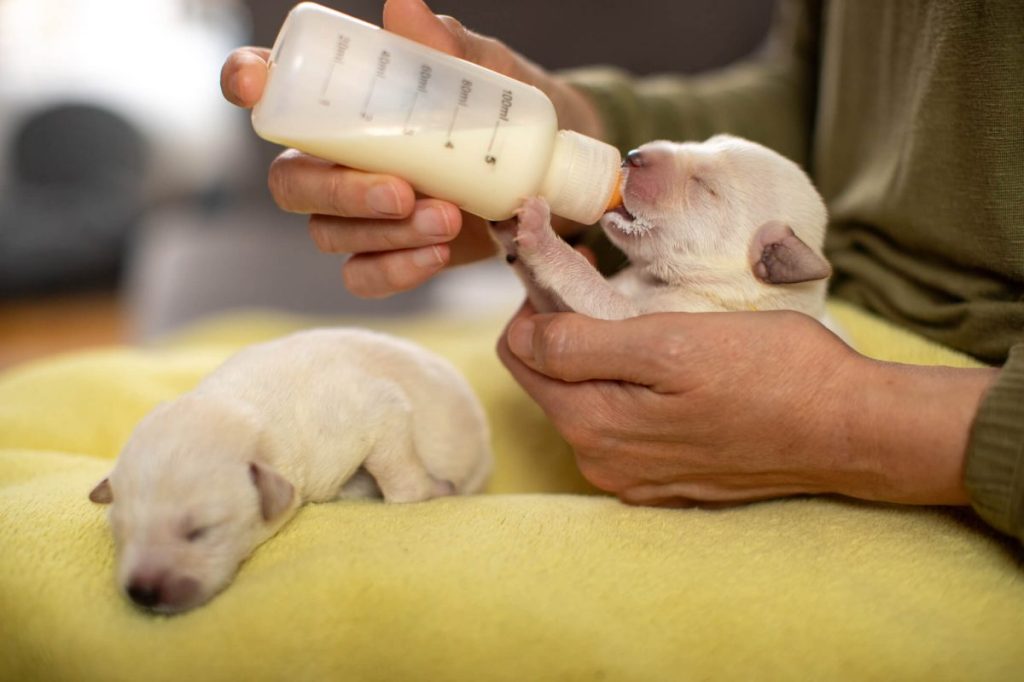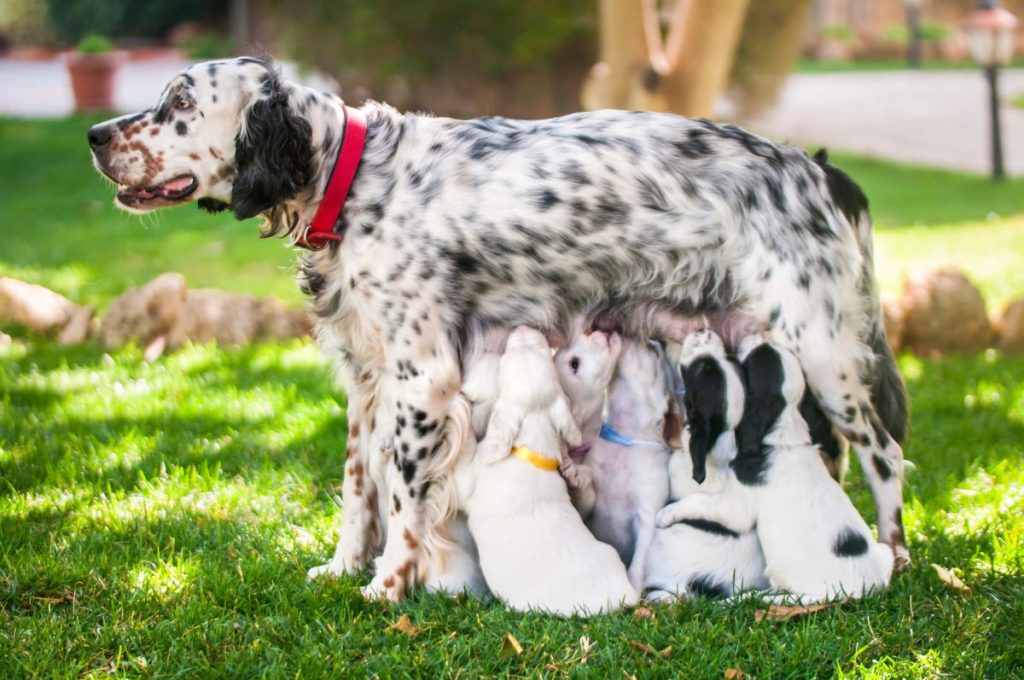
Mastitis is an inflammation of the mammary glands, which are the milk-producing glands located in a dog’s breasts. It is most commonly seen in nursing mothers, but it can also affect non-lactating female dogs and, in rare cases, males. Mastitis can be painful and, if left untreated, may lead to severe complications including systemic infections that can be life-threatening.
Here’s what you should know about the types, symptoms, causes, and treatments for the disease in dogs.
Types of mastitis in dogs
There are several types of mastitis in dogs, based on the severity and nature of the inflammation. These include:
Acute mastitis
This type is characterized by a sudden onset of symptoms. The affected mammary gland becomes swollen, red, and painful. Moreover, milk may appear bloody or purulent. Acute mastitis is usually triggered by bacteria entering through cracks or fissures in the nipples, often due to the vigorous sucking of puppies or poor hygiene.
Chronic mastitis
Chronic mastitis is a long-term inflammation of the mammary glands that develops slowly over time. Unlike acute mastitis, the symptoms could be less severe but persistent. Dogs with chronic mastitis might show intermittent pain, slight swelling, and mild discomfort. The underlying cause can still be bacterial, but the infection may be less aggressive or the body may partially control it, leading to a smoldering infection. Chronic mastitis can also occur due to untreated acute mastitis.
Septic mastitis
Septic mastitis is a severe form of mastitis where the bacterial infection leads to abscess formation, systemic infection, or sepsis. In advanced cases, the affected gland may rupture — a condition sometimes referred to as burst mastitis — discharging pus. This type is extremely painful and requires immediate veterinary intervention.
Non-septic mastitis
Though less common, non-septic mastitis occurs without the involvement of bacteria. It can result from physical injury — such as trauma to the mammary glands — or other non-infectious causes like galactostasis, where milk stagnates in the ducts. This form of mastitis may present with symptoms similar to infectious forms, including swelling and pain, but there is no presence of infection.
Gangrenous mastitis
This is a rare but severe type of mastitis where the tissue of the mammary gland dies due to lack of blood flow and severe infection. It often presents with blackened or dark blue tissue, which indicates necrosis. Gangrenous mastitis requires aggressive treatment, including antibiotics and sometimes surgical removal of the affected gland(s) to prevent the spread of infection and systemic sepsis.
Symptoms of mastitis in dogs
One of the earliest signs of mastitis in dogs is noticeable swelling in the mammary glands. These glands may also feel warm or hot to the touch. Other symptoms may include:
- Pain and discomfort, particularly during nursing
- Discolored, thickened, or ulcerated skin over the glands
- Discharge from the nipples, which may be pus-filled, bloody, or unusually colored
- Reluctance to nurse puppies
- Lethargy
- Fever
- Decreased milk production
- Reduced appetite and weight loss
- Enlarged lymph nodes in the region of the mammary glands
In extreme cases, abscesses may form, or the infection can spread to the bloodstream, leading to a life-threatening condition called septicemia.
Causes of mastitis in dogs
Mastitis typically arises from bacterial infection, which can occur through various routes. The most common cause is the entry of bacteria through the teat canal, often due to minor injuries or trauma to the nipple or mammary gland. This can happen during nursing when puppies have sharp teeth or nails, or as a result of poor sanitation practices. Additionally, stagnant milk in the mammary glands can create an environment conducive to bacterial growth, particularly if a puppy dies or is removed from nursing, leaving the mother with an unemptied gland.
The bacteria most frequently implicated in canine mastitis include Staphylococcus, Streptococcus, and Escherichia coli species. These organisms are part of the normal skin flora but become problematic when they enter the sterile environment of the mammary gland.
Dogs that have had mastitis previously are at a higher risk of developing it again. In non-pregnant or non-lactating dogs, mastitis can arise as a secondary infection that spreads from another part of the body or as a symptom of mammary gland cancer.
Treatments for mastitis in dogs

The first step in treating mastitis is to get an accurate diagnosis from a veterinarian. This typically involves a physical examination, a review of your dog’s medical history, and possibly some diagnostic tests such as blood work or a milk sample analysis. Your vet will want to rule out other conditions that might present similar symptoms.
Once mastitis is confirmed, antibiotics are usually prescribed to combat the bacterial infection. The choice of antibiotic will depend on the type of bacteria identified, if known, and the severity of the infection. Commonly used antibiotics include cephalexin, amoxicillin-clavulanate, and enrofloxacin. Your vet may also recommend non-steroidal anti-inflammatory drugs (NSAIDs) to reduce inflammation and provide comfort.
Furthermore, applying warm compresses to the affected mammary glands can help reduce inflammation and encourage milk flow, which can relieve pressure and pain. Soak a clean cloth in warm — not hot — water, wring it out, and gently place it on the inflamed area for about 10-15 minutes, several times a day.
If your dog is lactating, it is often recommended to continue nursing or to express milk manually. Regular nursing helps keep the milk ducts clear and can prevent the buildup of milk that can exacerbate the infection. However, if the milk is infected, it may be necessary to bottle-feed the puppies to avoid passing the infection to them.
In cases where abscesses or necrotic tissue develops, surgical intervention might be required. This could involve draining abscesses or, in extreme circumstances, removing the affected mammary gland. Your vet will discuss the risks and benefits of surgery based on your dog’s specific condition.
Prevention of mastitis in dogs

Preventing mastitis in dogs largely revolves around maintaining good hygiene and ensuring proper care of lactating mothers. Keeping the whelping area clean and dry can significantly reduce the risk of bacterial infections. As such, regularly change bedding and ensure that the environment is free of contaminants. Moreover, proper nutrition and regular veterinary check-ups for both the mother and puppies are essential to catch any signs of trouble early on.
It’s also important to monitor the nursing puppies to ensure they are latching properly and not causing any trauma to the mother’s nipples. If a puppy is having difficulty nursing, they may chew or scratch the nipple area, leading to potential infection sites. In such cases, assistance from a veterinarian can help ensure proper nursing techniques are followed. Also, be sure to pay close attention to the health and behavior of the mother dog. If you notice any signs of discomfort or swelling in the mammary glands, contact your veterinarian immediately.
If mastitis is detected early in dogs and treated promptly, the prognosis is generally good. Most cases can be effectively managed with appropriate care, and symptoms usually resolve within two to three weeks. However, severe or untreated cases may lead to complications that are more difficult to manage and may result in a less favorable outcome. In such situations, more aggressive medical intervention might be necessary to fully resolve the infection. At any rate, regular follow-up with the veterinarian is crucial to ensure complete recovery and prevent recurrence.